In 1983, John Dickie IV could do 360s on his skateboard, ride half and quarter pipes, and jump two trash cans from one board to another. But, he couldn’t sweat. He was a typical teenager, hanging with his friends and dating girls. But, his need for dentures wasn’t typical.
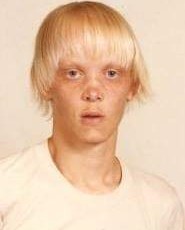
He didn’t know anyone else like him— someone who was affected by x-linked hypohidrotic ectodermal dysplasia (XLHED). It wasn’t unusual for that time in history to have not met another XLHED family. The National Foundation for Ectodermal Dysplasias (NFED) had only formed at the end of 1981 and membership was small.
A visit with a social worker specializing in genetic disorders changed that for John and his parents, Virginia “Ginny” Dickie and John Dickie, III. Ginny made the appointment to learn how ectodermal dysplasia is inherited. The social worker told them about the NFED.
“I contacted the Foundation and made arrangements to go to a Family Conference in Mystic, Conn. It was much smaller than today’s conferences—just a few families. I think the only affected adult may have been Kevin Ross.
I went by myself, and the night before the conference began, I saw a lot of little boys who looked like John IV. I went back to my room and cried. But, by the end of the conference, I had made friends and found so much hope. I encouraged John IV to go to another one. I never again cried about John’s condition. In fact, I became rather an advocate for spreading the information I discovered.
– Ginny Dickie
Meeting Lifelong Friends
John IV didn’t attend Conferences at first because he was in college and working during the summers.
Ginny said, “At my second conference, I met Chuck Root and was so impressed I convinced John IV to go to the Cincinnati conference. John, his sister Lauren, and I went in 1987. My husband got involved somewhere along the line, and for many years, the NFED conference was an annual event for us. We didn’t want to miss seeing friends, learning about the latest research, and supporting new families.”
John remembers meeting some adult men with HED and the impact it made on him.
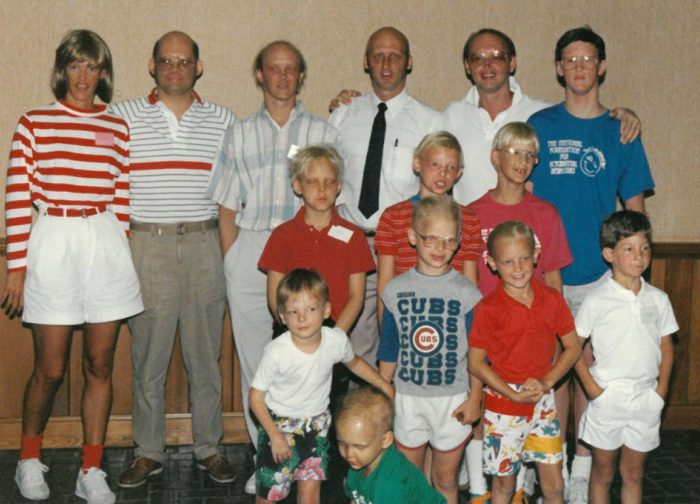
John (back row, third from left) met new friends at his first Family Conference in 1987 in Cincinnati. 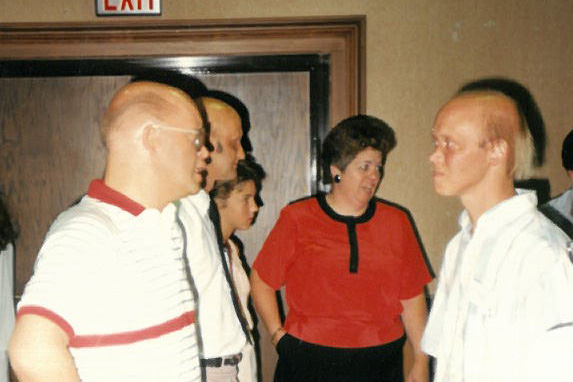
Robby Williams (left) shared his experiences with John IV (right). NFED founder, Mary Kaye Richter, is in the back.
“Mom had told me about how great the conferences were,” John said. “I joke about all of us looking the same, but honestly, when I first walked into the room, I saw several kids who looked exactly like I had as a child. It was a real eye-opener for me that I wasn’t alone with ectodermal dysplasia. I met Mary Kaye (Richter, NFED founder) of course and probably Charley, Chuck Root, and Frank Hazzard. Later on at other conferences, I met Dick Henkel, Joe Barone and another man who was into his 90s by then. There was an age gap both up and down, so I didn’t really meet anyone my age. But, I saw a lot of the kids making fast friends. This was also an eye-opener because many of the affected adults had families of their own and otherwise perfectly normal lives and careers. I saw the kids who were younger than me quickly forming friendships that I have watched endure over the years. Those kids are now in their 40s. Unfortunately, some of the older generation have passed on.”
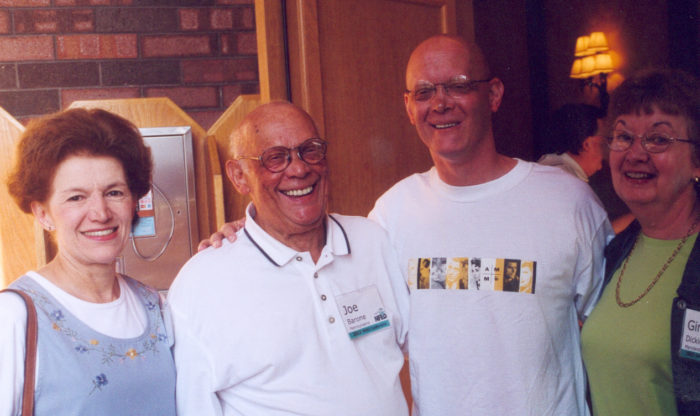
Anna Barone and Joe Barone (now deceased) were good friends with the Dickies. 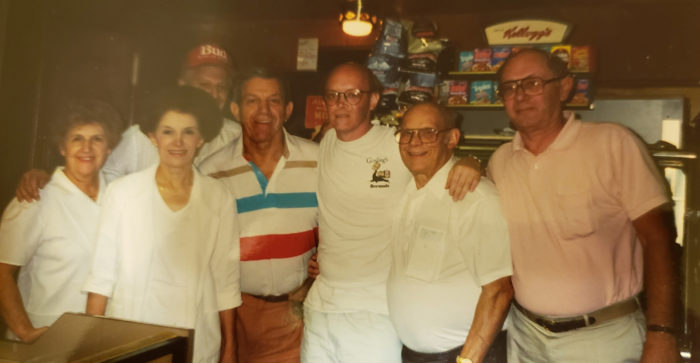
John IV (third from right) and his dad, John III (far right) visited Joe Barone (second from right) and his family in Pennsylvania.
For the next few decades, the Dickies attended Conferences when they could. Meeting the other families and the lifelong bonds that they have now, continue to be John IV and Ginny’s favorite memories.
“I enjoyed long walks with Joe and Anna Barone and the talks we had,” John said. “Sightseeing in the cities where the conferences were held, getting my butt kicked on the bobsled course in Park City, Utah—I ached for a week after that!”
Accepting the Diagnosis
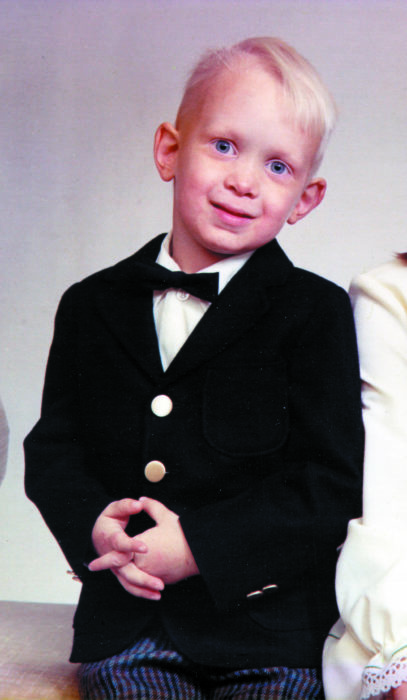
In the early days, information from the Foundation and other families helped provide answers to long held questions. Ginny said that when John IV was diagnosed in the 1960s, neither her husband nor she had ever heard of it. A medical resident at Johns Hopkins University, who was from Canada, knew of an adult back home with the condition. He saw John IV and gave them the name – ectodermal dysplasia.
“My husband at first was angry, but as time moved on and John IV found his own ways of coping with problems, John III (who passed in 2020) came to admire him, became closer to him, and considered him his best friend. I came to feel that, instead of perhaps being punished by having a child with an unusual disorder, I was given the privilege of raising someone extra special. I think my daughter feels this way, too.”
Without the existence of the NFED, the Dickies found help in a great dentist.
John IV said, “Nobody recognized ectodermal dysplasia for what it was at the time in the late 1960s. We had a pediatric dentist (Dr. Sanders) who pretty much made it up as he went along. He was a saint.”
“Some of the older affected adults (like Joe Barone) were probably not diagnosed until well into childhood or even much later,” John continued. “I remember someone telling me the story of sleeping on a concrete floor in the basement of their house as a child to stay cool, even though they didn’t know why they had to. I think the man in his 90s may have slept in a spring house at one point. That would have been around 1890-1900 if you do the math.”
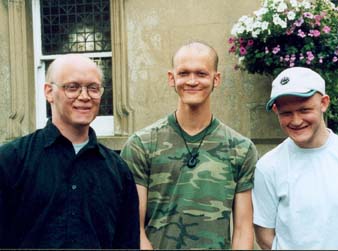
John, Sean Vora and a friend at the 2000 Conference in the U.K. 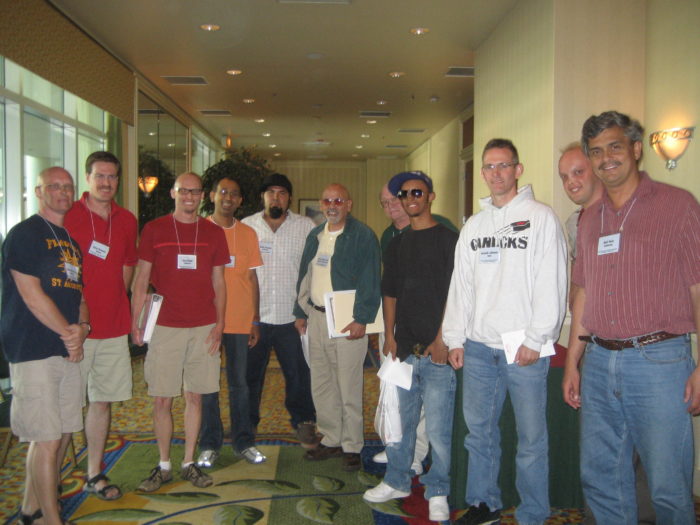
The Mens Workshop at the Family Conference was always a place where John could share with other young guys what he had learned.
One of the main reasons I come back to conferences (when I can) is to give back to the younger families there. To show them that anything is possible and that their kids are just like anyone else. I’m Joe Barone now in that sense.”
– John Dickie IV
The Dickies saw the importance of giving back right from the beginning of their time with the NFED. Ginny led the family in getting involved.
Giving Back
“I helped the NFED in fundraising, selling raffle tickets, and soliciting donations from the Lions Club (they promote sight conservation) and anyone I knew for contributions to the 999 Club for research. I did some editing of a few publications, and I wrote an article on ectodermal dysplasia for my church newsletter.”
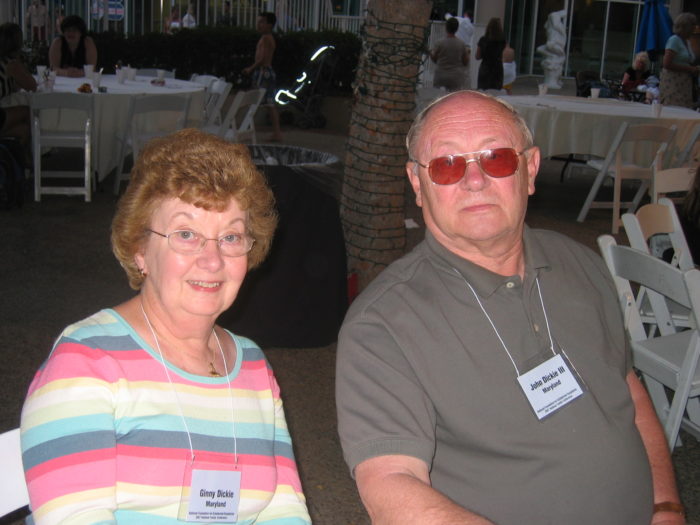
Ginny and John III 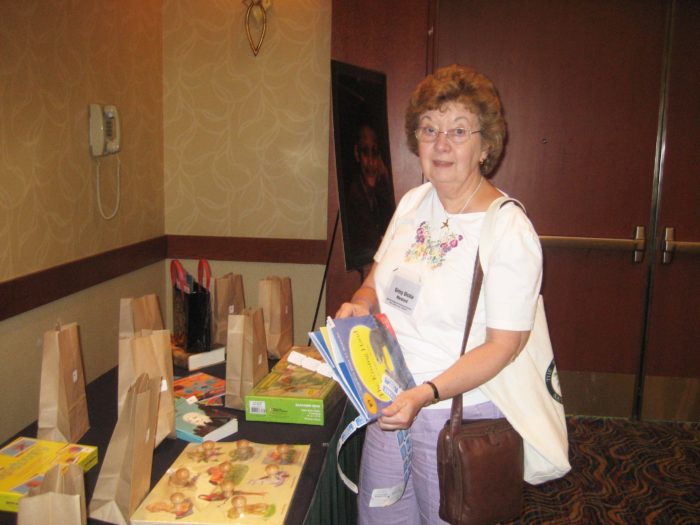
Ginny participates in the Chance Auction at Family Conference.
For John, who’s hiked to the top of Huayna Piccu at Machu Piccu, in Peru despite not sweating, he has always wanted to encourage parents to have high expectations for their affected children.
“I volunteered early on because I felt it was important to give back,” John IV said. “It’s all about giving back and helping newly diagnosed families to understand that ectodermal dysplasia doesn’t limit their children in many ways. The reality is that we can’t sweat, but other than that, I’ve never seen anything truly limiting. I think speaking on the panels at Conferences helps as well so that kids can understand how to navigate the inevitable teasing and cliques that are part of growing up for almost anyone.”
Sage Advice
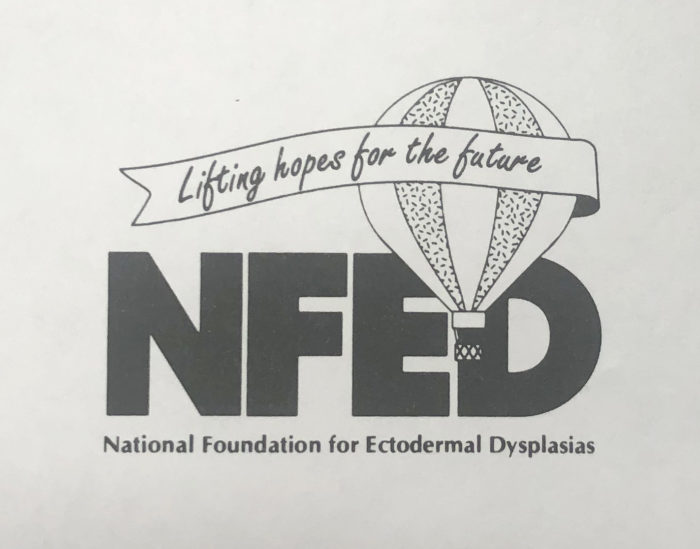
John leads a full and active life. A professional graphic designer, he has helped the NFED for decades with creating logos and other design. In fact, he created the NFED’s first logo in the early 1990s. Ginny recalls being on the phone with John. He explained that he was going to work on a logo design and that Mary Kaye wanted it to be uplifting. Ginny looked out the window at that moment and saw a hot air balloon in the sky. She thought, “Well, that’s uplifting.” That balloon became the inspiration for his design which the NFED used for many years.
Today, he lives in St. Augustine, Fla. with Marissa Napoli, and their three-year-old daughter, Caroline. He’s known locally for his passion for singing and songwriting along with his band, Collapsible B. You may have heard him perform at the Talent Show at past Family Conferences.
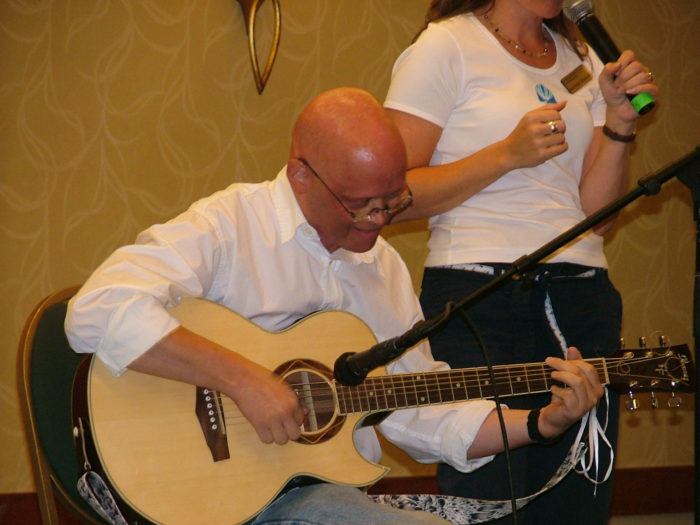
John performs one of his songs at an NFED Talent Show. 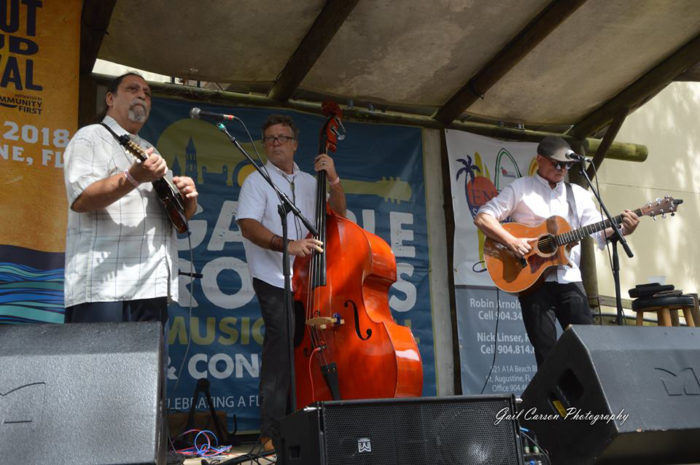
John (far right) and his band, Collapsible B, play music at a festival.
“Never set limits on your child,” John encourages. “Let them find their own limits. Don’t coddle or protect them too much. Growing up is hard for everyone, but ultimately, affected children can do anything they put their mind to for the most part.”
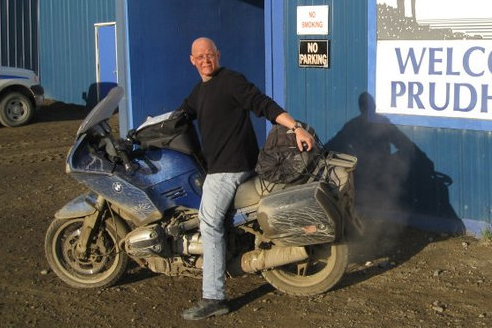
John and his bike have gone on many adventures. 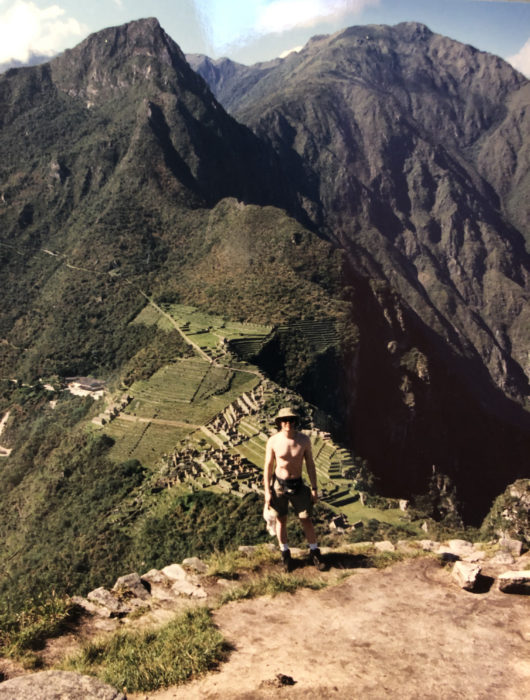
John hiked to new heights in Machu Picu. 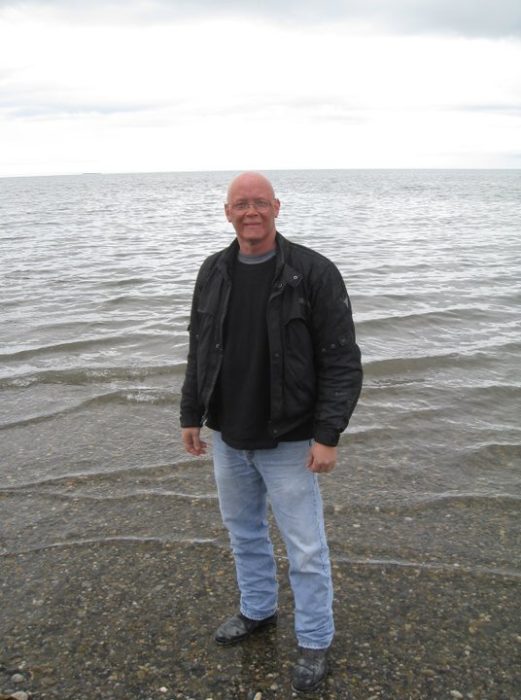
John visited the Arctic Ocean.
John continued, “Other kids and even adults can be cruel. Don’t confuse cruelty with curiosity though. Sometimes, people simply don’t recognize or understand ectodermal dysplasias because they have never encountered it before. Sometimes, teachers or school personnel will be slow to act or accommodate a special request. The best thing in those situations is to be honest and explain things in a straight forward way, or even refer them to the NFED website. If someone continues to tease after that, then it’s a reflection on them and their parents. As an example, the elementary school I attended as a child was built in 1933, well before air conditioning. The teachers allowed me to get up and go to the restroom whenever I needed to cool off, after my mom talked to them.”
How NFED Helped
When John and Marissa were ready to start a family, they turned to the NFED for information.
“I was already a young adult when I found the NFED, so I was pretty well adjusted by that point,” John said. “I knew what worked for me and what didn’t. The NFED did help later on when I went to start a family. I was tested to definitively determine what type I had so I would know how that may or may not affect my children. The NFED helped me prepare for any possible issues if my child was female, which is how things turned out of course.”
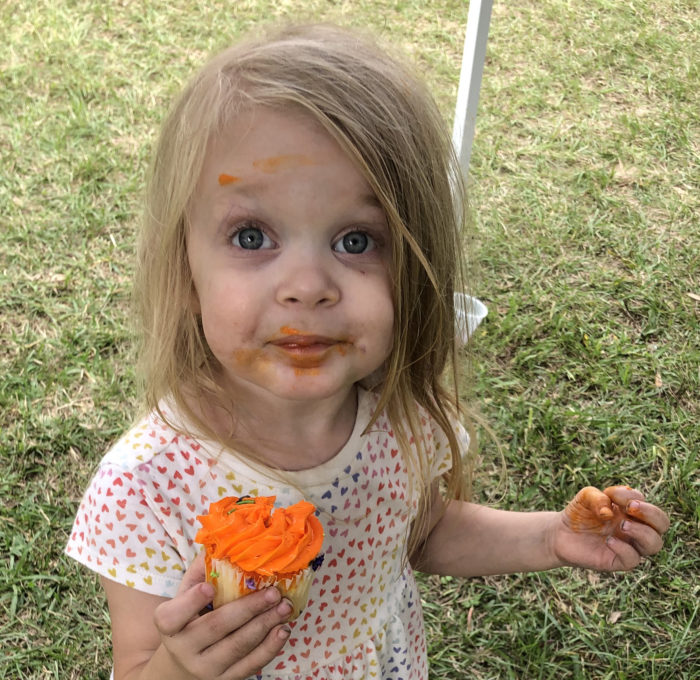
Caroline enjoys her cupcake! 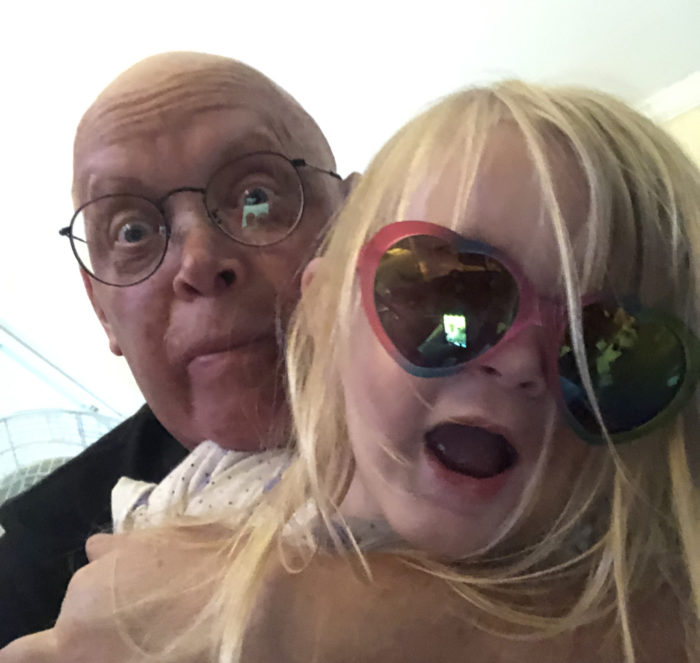
Dad and daughter love being silly together.
“My daughter is a beautiful little girl,” the proud dad said. “She is very well adjusted in her preschool class. She is a born politician who charms her way into the heart of anyone she meets. Her only symptoms are some malformed teeth, mostly on her lower jaw. We hope to correct this cosmetically when her adult teeth come in. Otherwise, you would never even suspect that she is a carrier.”
Paving the Way for Future Generations
Caroline may only need some dental treatment. But, a potential treatment for XLHED that lessens several symptoms is being studied in a clinical trial and could help future generations of the Dickie family. Ginny was a fundraising force in the late 1980s and early 1990s. She helped the NFED raise $100,000 for ectodermal dysplasias research in a campaign called the 999 Club.
Little did she know that those donations would underwrite research that has led to the development of this new protein therapy that is administered in utero. Early results show that it has had positive effects on sweat gland, salivary gland, and tooth bud development, and can decrease respiratory issues associated with XLHED.
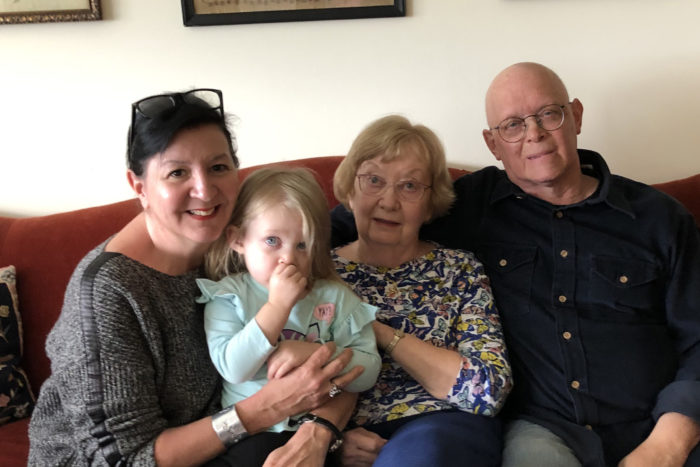
John IV finds the work truly fascinating.
“Science often moves very quickly. My hope is that by the time my daughter is old enough to have children of her own, XLHED or the effects of XLHED can be mitigated, corrected, or even completely eliminated. I’m cautiously optimistic that this will happen in my lifetime.”
What the NFED Means to Them
The Foundation has now been a part of the Dickies’ life for almost four decades. And it’s impossible to talk about the NFED’s history without thinking of the Dickies. Ginny reminisces about the role the Foundation has played.
“To me, the NFED was and is a godsend. We weren’t alone anymore— we found knowledge, tips on handling certain situations, good friends, and support!”
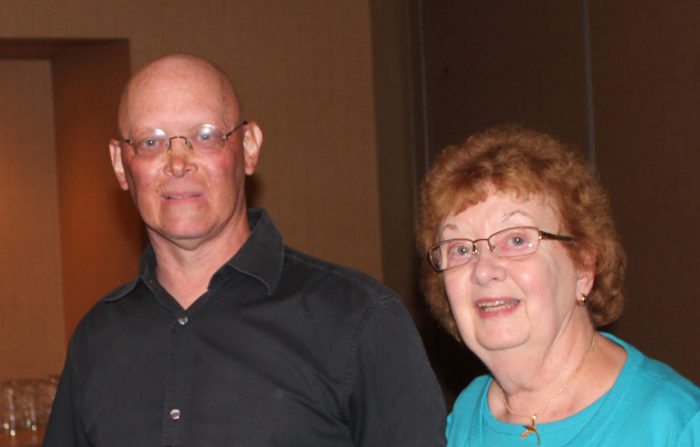
John is grateful to the many people along the way who have made a positive impact on him and his family.
“Certainly, Mary Kaye and Charley for their determination, can-do attitude, and hutzpah. The NFED could never have happened without them. The Barones for their years of earned wisdom living with HED, and their kind and gentle nature. Watching Mary Kaye grow the organization into a truly worldwide network, and Mary Fete taking it from there. The joy and energy that Jodi Edgar Reinhardt, the late Bev Meier, and the entire NFED staff have brought as well.”
The NFED means we are not alone, and that there is a worldwide network of people who have something in common with us that is very rare.
– John Dickie IV
“It also means that new families have access to the accumulated knowledge and wisdom that simply wasn’t around when I was a kid,” John shared. “And of course, it’s a window into what the future may hold as far as treatments, which is important to me as the father of a daughter who is a carrier. I don’t know how much of that would have ever happened without the NFED.”
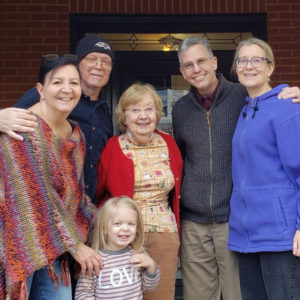
Great story!
Thanks so very much for sharing the Dickie’s story. It means a lot to be able to read all the stories that NFED posts. We are basically just beginning our ED journey (1 child is 10.5, 1 is 7 & both children were diagnosed approximately 2.5 yrs ago by an orthodontist (@ what we thought was “just” a visit to discuss the need for braces (13 missing teeth later…), but have already learned so much. We have not reached out for much support from NFED (& we don’t live in the States, so as far as we understand, support may be more limited), but we know it is there if we ever do need it. We have recognized that the NFED strongly supports everyone who needs it, & THAT is a true gift in& of itself!! It is b/c of receiving NFED e-mails & reading 1 mom’s struggles as a new mom, that I realized I am at least a carrier, but may also have ED myself that has always been unrecognized. It is true that you don’t know, what you don’t know!!
Thank you to all those who have gone before us, as we learn more about this “impossible” disease (as it was called by my children’s paediatrician (until I helped him become more informed)). Knowing that there are adults out there who can help inspire & motivate today’s youth to be the change they need for themselves, is definitely a helpful tidbit of knowledge! Reading (from a few different sources), that people can live largely normal lives with a few specific modifications, is very helpful indeed. We try to help our children to be the best they can be, & knowing that they set their own limits (as encouraged by John & others), helps us get to know our children so much more. I very, very much agree that having children who help adults/parents see more of who they really are, & more of what they are made of, is a strength & a blessing in disguise. I honestly believe other parents miss out on certain opportunities, when they don’t have a differently abled/chronically ill child. I wouldn’t give up that relationship for the world.
Thank you to all those at NFED for helping people to be their best…whatever that may look like & whatever that may mean for them. You are all very helpful & it is good to know that the sky really is the limit.
Up, up & away….
Hi, Beth! Thank you so much for your kind words. We are really enjoying talking to some of our long-time members and sharing their stories in our 40th anniversary year. I’m so glad that you are connected with our NFED family.
Best,
Veronica
John, Great to catch up on some 30 odd years of your adventures. We have a lot to share and catch up on, maybe at the next family conference.
Hey Dick!
Good to hear from you. We hope to attend the upcoming conference. Maybe we’ll see you there. I hope you are well!
John